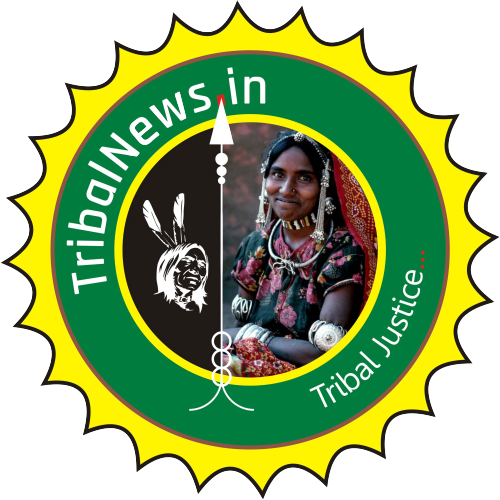J&K TRIBES
- Jammu and Kashmir are a land inhabited by various Tribal groups. These Tribal Groups are spread in almost every corner of the Hill State making its culture and tradition richer and colourful.
- Balti Tribe, Bakarwals, Dogra, Brokpa, Changpa, Beda.
Eight communities Tribes in Jammu and Kashmir — Balti, Beda, Bot, Brookpa, Changpa, Garra,Mon and Purigpa And Bakarwals, Gujjars, Gaddis and Sippis were notified as the scheduled tribes vide the constitution (Scheduled Tribes) order (Amendment) Act,1991.
All the twelve (12) Scheduled Tribes (STs) were enumerated officially for the first time during the 2001 census recording a population of 1,105,979. The Scheduled Tribes account for 10.9 per cent of the total population of the State and 1.3 per cent of the total tribal population of the country.
The major tribes in Jammu and Kashmir. These tribes are: 1) Balti 2) Beda 3) Bot, Boto 4) Brokpa, Drokpa, Dard, Shin 5) Changpa 6) Garra 7) Mon 8) Purigpa 9) Gujjar 10) Bakarwal 11) Gaddi 12) Sippi.
The Gujjars are known by many names: Ajjadh, Dohdhi Gujjars, Banhara Gujjars, and Van-Gujjars. Among Gujjars, those who rear goats and sheep are called Bakarwals. Gujjars and Bakarwals share the same history, culture, language, sub-caste and racial identity.
Hindu Gujjars usually belong to the kshatriya varna, although some communities are classified as Brahmin. Gujjars can also be Muslim, Sikh, Christian and presumably Buddhist
A Hindu tribe, the Gaddis hail from motley castes—Brahmin, Rajput, Khatri, Rana, Thakur—and trace their ancestry to Delhi and Lahore. They are considered to have descended from the persecuted escapees of Mughal emperor Aurangzeb’s reign; many, though, swear lineage to Greek king Alexander and his roving army.
Rouf Dance of Jammu and Kashmir: One of the most known dance forms in all the regions of Jammu and Kashmir is ‘Rouf; which is generally pronounced as ‘ruf’ in villages and as ‘row’ in cities. It is a dance performed on set of spring season and has always been an integral part of kashmiri people since a very long time.
Eid is the famous festival of Kashmir. With a majority of Muslim population in the state, it’s no wonder that one of the main festivals of Kashmir would be Eid. Eid-ul-Azha and Eid-ul-Fitr are the two Eids that are celebrated all over the world by Muslims and it is no different in Kashmir.
famous food of Kashmir: While all of Kashmiri cuisine is mouth-watering, here we have 18 famous Kashmiri dishes to begin Kashmir’s culinary journey!
- Mutton Rogan Josh. Let us kick it off with some tender mutton. …
- Paneer Chaman. …
- Kashmiri Saag. …
- Nadru Yakhni. …
- Chicken Pulao. …
- Kashmiri Rajma. …
- Dum Olav. …
- Kashmiri Muji Gaad.
Important festival of Jammu and Kashmir: Some of the main festivals of Kashmir include Lohri, Holi, Navratri, Baisakhi or New Year Day, Guru Ravi Das’s Birthday, Tihar and Sankranti. The famous dance of Jammu and Kashmir: Dumhal is a famous dance in the, performed by men of the Wattal region of Kashmir valley.
Kashmiri Traditional Wear: A traditional kurta and salwar for men actually called the Khan Dress. In the rest of India, it is famous as a pathani. Women on the other hand wear Salwar-Kameez donned with a dupatta. The hair of women is usually covered with a headscarf.
APPLE. Apples of Kashmir are the most famous fruits from Kashmir locally known as Sebh or Tsoonth.
Kashmiris eat for breakfast :12 breakfast of Kashmir :Noon Chai. Made from green tea leaves, milk, salt and baking soda, this pink Kashmiri chai is cooked in a traditional metal container called a samovar, Chhir Chot..Kahwa, Girda. Lavasa Masala Tchot ,Bakarkhani ,Chochwor,Harisa.
Jammu and Kashmir are the only Indian state with a Muslim majority population. According to the 2011 census, Islam is practiced by about 68.3% of the state population, while 28.4% follow Hinduism and small minorities follow Sikhism (1.9%), Buddhism (0.9%) and Christianity (0.3%).
Specialty of Kashmir: Popularly known as the “Paradise on Earth”, Jammu and Kashmir are world famous for its scenic splendor, snow-capped mountains, plentiful wildlife, exquisite monuments, hospitable people and local handicrafts.
